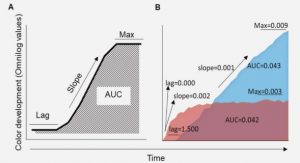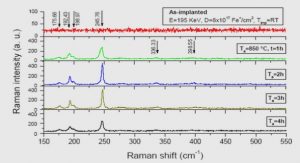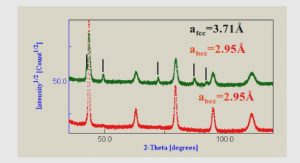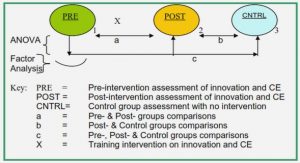Get Complete Project Material File(s) Now! »
Chapter 3 Development and Optimization of TMC Modified PLGA-TPGS Nanoparticl
Introduction
As discussed in Chapter 1 and 2, gemcitabine is a very effective drug for the treatment of breast cancer. However, gemcitabine has a very short plasma half-life of approximately 12 min (Campbell and Hasinoff 1989, Abbruzzese, Grunewald et al. 1991). It undergoes peripheral decarboxylation by AADC and first-pass metabolism resulting in limited amount of the given gemcitabine dose is transported unchanged to the breast cancer site after oral administration (Zorc, Ljubic et al. 1993). Due to limited transport across the GIT to the blood circulation, gemcitabine has to be administered at high dose continuously with administration of a peripheral decarboxylase inhibitor such as carbidopa (Whitney 2007). However, it is potentially toxic if a large amount of gemcitabine is ingested in combination with an AADC inhibitor. These toxic side effects include cholangiocellular, carcinomas, nausea, neutropenia, hair lost, and gastrointestinal disturbances such as vomiting and anorexia (Pahwa and Koller 1998, Kubicka, Rudolph et al. 2000, Whitney 2007). In addition, gemcitabine can also undergo auto-oxidation and enzymatic oxidation to generate toxic metabolites (Parsons 1985) because as described in Chapter 2, gemcitabine can be oxidized relatively easy (Siddhuraju and Becker 2001).
A promising approach to circumvent such limitations and increase its bioavailability is to encapsulate the gemcitabine in a suitable nano-sized carrier and to specifically target breast cancer via oral drug delivery route. This aim in using PLGA based NPs is to improve gemcitabine bioavailability by protecting gemcitabine against peripheral decarboxylation, enzymatic degradation and promote the permeation of the drug across the GIT to the blood circulation. PLGA was selected for formulation of polymeric NPs due to its biodegradability and biocompatibility as well as high permeability across the GI tract.
D-α-tocopheryl polyethylene glycol 1000 succinate (TPGS) is a hydrophilic derivative of natural vitamin E, which is formed by esterification of vitamin E succinate with polyethylene glycol (PEG) 1,000. TPGS could improve drug permeability through intestinal epithelial cell membranes by inhibiting P-glycoprotein, a drug efflux pump. Thus elevate drug absorption as well as reducing P-glycoprotein-mediated multidrug resistance in tumour cells (Dintaman and Silverman 1999, Yu, Bridgers et al. 1999, Ma, Zheng et al. 2010). In addition, it was reported that TPGS could also inhibit the human lung cancer cells effectively. This was confirmed from in-vitro cell culture studies and in-vivo studies on lung cancer bearing mice (Youk, Lee et al. 2005). The superior anticancer effect of TPGS is associated with its ability to induce cancer cells apoptosis and not due to its increased cell uptake into cells (Youk, Lee et al. 2005, Neuzil, Tomasetti et al. 2007, Constantinou, Papas et al. 2008). Synergistic anticancer effects can be also obtained by using vitamin E isomers or derivatives combining other antitumor agents (Constantinou, Papas et al. 2008). Furthermore, TPGS can be also used as a stabilizer for NPs preparation. TPGS-emulsified drug loaded NPs have shown great drug encapsulation capability as well as sufficient cellular uptake, enhanced drug half-life and improving anticancer effects compared to those emulsified by PVA stabilizer, which is a widely used stabilizer in PLGA NPs preparation (Ma, Zheng et al. 2010). Therefore we were inspired to develop a PLGA-TPGS NPs formulation and stabilized by TPGS emulsifier for gemcitabine.
TMC, a derivative of chitosan, which has been widely applied in various pharmaceutical formulations due to its many benefits such as great stability, enhanced solubility in physical pH, and most importantly, it allows to increase the mucoadhesion to the intestinal epithelial membrane, thus facilitating drug permeation across the intestinal epithelial membrane (Snyman, Hamman et al. 2003, Sahni, Chopra et al. 2008). Bearing with this in mind, TMC is considered as a great option to encapsulate PLGA-TPGS NPs as an outer coating. Therefore it will further protect the inner PLGA-TPGS NPs from harsh GIT environment as well as enhancing the drug loaded NPs to permeate through the intestinal epithelial membrane which attributed by its great mucoadhesion property. Therefore in this project, we develop a novel TMC modified biodegradable PLGA-TPGS random copolymer NPs for oral delivery of gemcitabine to treat breast cancer.
Several techniques to fabricate PLGA based NPs have been reported in the literature (Astete and Sabliov 2006). Selection of a particular method of encapsulation depends on the drug solubility and molecular stability. The commonly employed techniques for NPs preparation are emulsion evaporation, emulsion diffusion, solvent displacement and salting out (Astete and Sabliov 2006). The most widely used technique for hydrophilic drug encapsulation in NPs is the double emulsion method. As it is difficult to entrap a hydrophilic molecule within a hydrophobic polymer, this technique takes advantage of high energy mixing. By using this technique, a primary water-in-oil (W1/O) emulsion of hydrophilic drug and polymer is formed, and the secondary water-in-oil-in-water (W1/O/W2) emulsion is formed by dispersion of the primary emulsion in an aqueous phase. Subsequently, polymeric particles were precipitated upon removal of the organic solvent. The drawback of double emulsion solvent evaporation is the low entrapment efficiency of the hydrophilic compounds due to the hydrophilic molecules are easily diffusing out of the inner W1 phase to outer W2 phase.
Taking advantage of the polymeric NPs, the main focus of the present study was on the development of TMC modified PLGA-TPGS NPs (Figure 3-1), that will allow oral delivery of gemcitabine to cross GIT, thus achieving the ultimate goal of this research: to enhance oral bioavailability of gemcitabine.
To fabricate this drug delivery system, the chemical conjugation of PLGA-TPGS copolymer was predominately prepared. Subsequently the gemcitabine-loaded PLGA-TPGS NPs was fabricated with a double emulsion solvent evaporation technique. Finally, to address the TMC outer coating by further suspend the NPs in the TMC solution. The NP formulations were then characterized for their particle size, size distribution, zeta potential, morphology, drug entrapment efficiency, drug release and long-term stability. The process and formulation variables were optimized to produce nano-scale particles with high drug entrapment efficiency based on a factorial design and response surface methodology (RSM).
Materials
Poly(D,L-lactide-co-glycolide) (PLGA: L/G = 50/50, MW 7,000 – 17,000) was provided by Purac Biochem, Lincoln, IL, USA. D-α-tocopheryl polyethylene glycol 1,000 succinate [TPGS, C33O5H54 (CH2CH2O)23], gemcitabine (purity ≥ 98%), stannous octoate [Sn(OOCC7H15)2], 3-(4,5- dimethylthiazol-2-yl)-2,5-diphenyltetrazolium bromide (MTT), trifluoroacetic acid (HPLC grade, purity ≥ 99.0%), fluorescein isothiocyanate (FITC) conjugation kit, N-hydroxysulfosuccinimide (NHS), N-(3-Dimethylaminopropyl)-N’-ethylcarbodiimide hydrochloride (EDC), were obtained from Sigma-Aldrich (St. Louis, MO, USA). Dichloromethane (DCM, AR grade) and pyridine were purchased from Scharlau Chemie S.A (Barcelona, Spain). Acetonitrile (HPLC grade) and toluene (HPLC grade) were supplied by Merck (Auckland, New Zealand). Distilled, deionised water was used throughout and was obtained from a Millipore water purifier (Milli-Q water gradient, resistivity ≥ 18 Ω cm). All other chemicals used were reagent grade.
Methods
Formulation development
To prepare the gemcitabine-loaded TMC modified PLGA-TPGS NPs, the modified water-in-oil-in-water (W1/O/W2) emulsion solvent evaporation technique was used (Blanco and Alonso 1997, Davda and Labhasetwar 2002).
PLGA-TPGS copolymer synthesis
First, a copolymer of PLGA-TPGS conjugation is synthesised. PLGA-TPGS random copolymers were synthesized from PLGA and TPGS in the presence of stannous octoate as a catalyst via ring opening polymerization (Ma, Zheng et al. 2010) (Figure 3-2). Briefly weighted amounts of PLGA, TPGS (weight ratio 1:1) and 0.5% w/w stannous octoate (in distilled toluene) were added in a flask. The mixture was heated to 145°C and allowed to react for 16 hr. Synthesis was carried out under an oxygen and moisture free environment. The product was dissolved in dichloromethane and then precipitated in excess cold methanol to remove unreacted PLGA polymers and TPGS. The final product was collected by filtration and vacuum dried for 24 hr to remove organic solvent residues.
Chapter 1 . General introduction
1.1 Breast cancer
1.2 Introduction to gemcitabine
1.3 Overview of oral drug delivery of gemcitabine
1.4 Strategies to enhance bioavailability of gemcitabine
1.5 Characterisation of bioadhesive Nanoparticles
1.6 Other factors to be considered for oral drug delivery
1.7 Thesis aims and structure
Chapter 2 . Analytical method development for gemcitabine
2.1 Introduction
2.2 Aims of Studies
2.3 Materials
Instruments:
2.4 Methods
2.5 Results and discussion
2.6 Conclusion
Chapter 3 . Development and optimization of TMC modified PLGA-TPGS nanoparticles
3.1 Introduction
3.2 Materials
3.3 Methods
3.4 Factorial design
3.5 Characterization of TMC modified PLGA-TPGS nanoparticles
3.6 Results and discussion
3.7 Characterization
3.8 Conclusion
Chapter 4 . Development and optimization of CSKSSDYQC peptide conjugated N-trimethyl chitosan nanoparticles
4.1 Introduction
4.2 Materials
4.3 Methods
4.4 Characterization of the drug loaded nanoparticles
4.5 Results and discussion
4.6 Conclusion
Chapter 5 . Evaluation of drug loaded nanoparticles in drug uptake and drug transport studies
5.1 Introduction
5.2 Materials
5.3 Methods
5.4 Cytotoxicity, drug uptake and transport studies
5.5 Results and discussion
5.6 Drug transport studies
5.7 Conclusion
Chapter 6 . In vivo pharmacokinetic and pharmacodynamics studies
6.1 Introduction
6.2 Breast cancer 4T1 cells
6.3 In vivo animal studies
6.4 Results and discussion
6.5 Conclusion
Chapter 7 General discussion and future perspectives
7.1 General discussion
7.2 Limitation and future perspectives
7.3 Conclusive remarks
Reference
GET THE COMPLETE PROJECT
Development of novel nanoparticulate delivery system for oral delivery of gemcitabine to treat breast cancer






